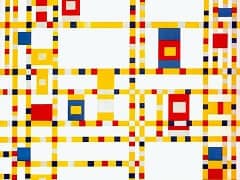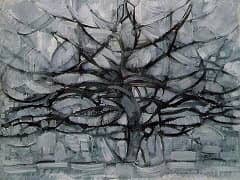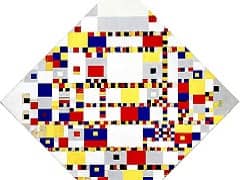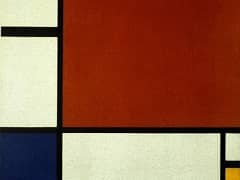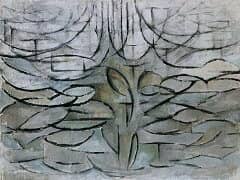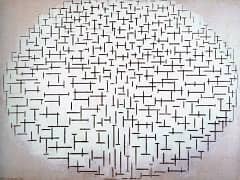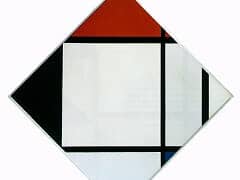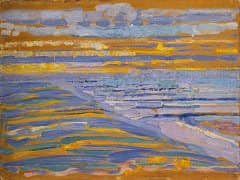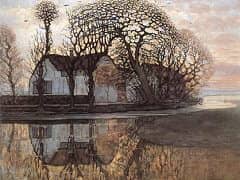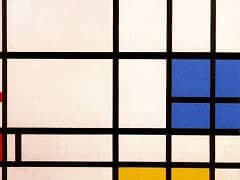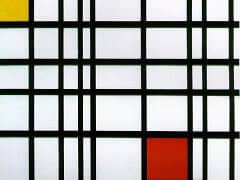New York City I, 1942 by Piet Mondrian

New York City I, or rather the series of works later brought together under the title New York City, marks the beginning of a new phase in Mondrian's work. The black lines have disappeared along with the rectangles of primary color, which since the 1918 Composition: Color Planes with Gray Contours had formed a solid flat totality with the lines and the white that had previously been the background. Instead, lines in the primary colors - yellow, but also red and blue - traverse the square canvas, interweaving with each other.
For the most part, the yellow lines cross those of the other colors, but here and there, in a most subtle way, the red and blue lines cross the yellow. Yet this style does not give rise to an illusionary space; the colored bands over- and underlap one another on the surface, before the eyes of the viewer. It is quite reasonable to accept Michel Seuphor's suggestion and attribute this effect of crossing and interlacing to Mondrian's method of conceiving and working out these pictures: he used strips of colored paper and moved them about on the canvas to get the effect he wanted. In this way, he almost automatically introduced the crossovers and the suggestion of interwoven colored bands.
This technique was one of the reasons for the change in Mondrian's style and manner of working after his arrival in the United States, just as the papiers colles technique marked a transition between the analytic and synthetic phases of the cubism of Pablo Picasso and Georges Braque. The other reason for the change, which some of his European followers regarded as a departure from his own principles, was the inner liberation he felt after his move to America. The atmosphere he encountered there was not filled at all times with a feeling of menace and dread, but with a solid confidence in final victory over the tyranny that had driven Mondrian from Paris. As a result his pictures of the American period have a different tonality, in major as it were, compared with the somber canvases, dominated by black lines, of the end of his stay in Europe.
Moreover, in the brisk allegro rhythm of these paintings there is a new feeling for harmony, which Mondrian could have learned only in his new surroundings: the rhythm of the modern metropolis. In the early days of De Stijl, Mondrian and his friends had striven to have the human environment, the great city, determined by the laws of harmony. Now, an example of this new cultural pattern, New York City, had a radical influence on his painting.

